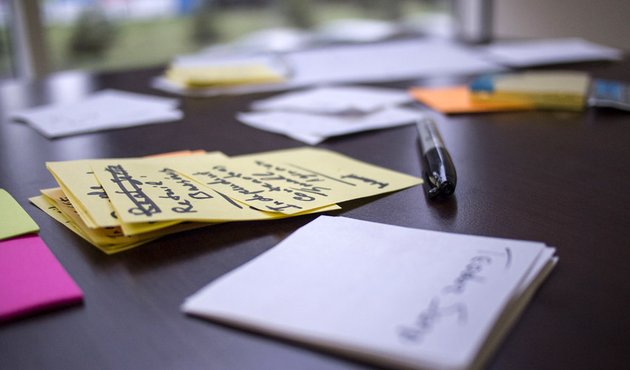A website can be as big as you want it to be. Or worryingly, as big as your stakeholders want it to be. For some organizations content production for websites is like a conveyor belt that’s always moving. There’s no limit to the amount of content that can be added and this presents challenges around governance, quality and control. It also means saying no to content could be met with resistance.
Content requests should be expected. There may be requests for:
- New sections
- Amends and updates
- Redesign of an entire site
- New content formats (video)
Interestingly, there are usually fewer requests to remove or archive content but that’s a whole different article.
Back to prioritising website content.
When requests are made by different stakeholders they often come with various agendas and priorities because each stakeholder has their own focus and concerns. With larger organisations it is common for one department not to know what another is doing when it comes to content. So why would they stop to consider how their content request fits into the wider content system?
But what happens when multiple content requests meet business goals and user needs? How do you decide between a dozen great ideas?
This article offers some practical techniques for prioritising website content.
Prioritising Website Content, Collaboratively
It isn’t always about saying no either, sometimes it is yes but not yet, or yes but here’s the process for publishing. Engaging stakeholders around content will be key to managing expectations, building relationships and allowing all concerned to voice their opinions. It’s never ideal just to pushback without rationale or evidence. You’ll need to invest in getting stakeholder buy-in as early as possible.
Running a workshop, or even organising a well planned meeting can surface all of the content requirements.Facilitate sessions where all involved have a chance to share their priorities and put the case forward for why some content should take priority over other content. This should all be discussed with the business goals, user needs and target audience in mind. It’s also worth emphasising that quality trumps quantity when it comes to content.



A workshop or meeting like this is the perfect opportunity for using a dot voting process.
Dot Voting
This technique works well when the list of website content is written on post-it-notes and stuck on the wall for all involved to see. Stakeholders can then put 1 to 3 dots against each page/piece of content; the more dots, the higher the priority.



This technique works well for assessing priorities across multiple agendas and departments (depending on which stakeholders attend) and provides a good high-level of all priorities.
It also gives every stakeholder a chance to share their priorities, but all content is then assessed with wider business goals and needs in mind. Having an interactive task may increase engagement from stakeholders too.
This relies on those involved to be honest and try to think beyond their own department/needs.
The MoSCoW Method
The MoSCoW method requires that whatever is being prioritised is categorised as one of the following:
- We Must
- We Should
- We Could
- We Won’t … produce this piece of content for the site launch.
For content, this could result in decisions such as:
- We Must – include this content for compliance reasons
- We Should – have at least one expert quote in each article
- We Could – create bespoke images and not use stock imagery
- We Won’t – include updated staff bios this time due to the agreed scope and timescales
By having all owned content listed in an inventory (usually a spreadsheet) it is easy to assign a category to each piece of content and then filter by each of the four variables that make up the MoSCoW method.
Content owners can then be assigned to each piece of content too, along with deadlines for production.



Determining whether each content requirement is Must/Should/Could/Won’t will once again depend upon business goals and user needs but there are other considerations to be made too such as:
1. Project Timeline
The length of the project may determine how much content can be created within the schedule.
2. Project Scope
Some content ideas may be outside of the agreed project scope. Those ideas either need to be rolled out in additional phases after the main project launch, or if they are marked as a must do priority, perhaps other content will need to be “downgraded” in priority to accommodate this.
3. Resources
It’s no surprise that what content can be produced, and by when, is often dependent on the resources available. Time, money and people will influence what content can be committed to.
Including additional factors in the decision-making process, such as effort, is a key factor for another prioritisation technique.
The RICE Method
RICE is a scoring system developed by the team at Intercom to help prioritise ideas on their product roadmap. RICE invites content teams to think about their priorities with available resources, audience and return on investment firmly in mind.



RICE is an acronym for:
- Reach
- Impact
- Confidence
- Effort
These four factors can be discussed in relation to website content too. Use this method to determine what content would take the most effort, reach the most people, have the biggest impact and how confident you feel about all of those areas.
The beauty of a technique like RICE is that it can guide teams in their prioritisation discussions, but can also be adapted to suit differing needs. Perhaps content is given a percentage or a score out of ten, for example. There is still an element of gut reaction, existing understanding and influence from previous experience but RICE really does force teams to think about content in relation to four crucial factors.
Reach
Understanding what audience (who, where, how, size) a piece of content will be targeting can influence how much of a priority it may be. It may be decided that as many people as possible is a big win or a smaller but more quantified and relevant audience is the goal.
Impact
This can be trickier to validate before publishing, but it does prompt useful discussions around what impact a piece of content might have. An example would be, if a help centre article is published, the impact may be fewer support tickets raised about a certain topic or task.
Confidence
Confidence is a tough factor to gauge and tricky to facilitate a balanced conversation around. Yet confidence is key because if there is very little of it in a piece of content successfully reaching the audience, making an impact and being produced with a manageable amount of effort, then it should be considered a low priority. Teams must consider their available resources, project scope and timeline when thinking about confidence as part of this technique.
Effort
Estimating the effort to get content produced can be an ambiguous task, but it is an estimate rather than an actual quantity of time or money. It’s not just about getting content produced either; the distribution, measurement and governance of that content may also need to be taken into consideration.
The RICE method facilitates a well-rounded discussion and forces website project teams to answer some tricky questions, but the outcome will be a clear view of what is feasible and essential for launching the website.
User Stories
This method takes a step back from internal requests to add and update content. It is a method of user-centred design. Sarah Richards describes user stories and job stories as ‘ways of capturing what a user wants to do.’
When you have a list of user stories and what content is needed to meet those needs, you can prioritise based on your audience. This method should remove internal bias and politics as the user stories will be based on evidence.
User stories are written in a certain format:
- As a …
- I want …
- So that …
An example of a user story is:
- As a project manager
- I want to be able to understand my teams progress
- So I can better report to stakeholders
You can map these user stories with business goals, and then content, and this can result in a prioritised list.
Outside of taking time to follow a certain method or process, sometimes content requests need to be prioritised with a little less scrutiny. It could be that there are several articles pitched for a company blog. A way to prioritise those is asking what the purpose of the article is, who is it for and also being guided by editorial themes.
You may use a certain method for one project and then another for the next. Whichever you try, be collaborative. Involve people and align around the content, its purpose and the audience.
Better Website Content For All!
It’s easy to get excited as website projects kick-off and when lots of stakeholders are involved, the request for content can be overwhelming, with conflicting priorities.
Adopting a structured technique to prioritising content will ensure website content production and delivery is realistic in relation to project scopes. Expectations can be managed in-line with available resources and business goals and user needs remain a focus as content is discussed and prioritised. Next time you receive multiple content requests or start a website redesign project, try one or some of these methods and see if it results in better content for audiences and time is focused on what is needed rather than being wasted on discussing, planning and producing low priority content.
